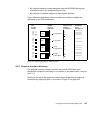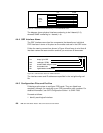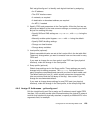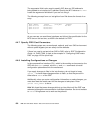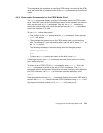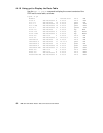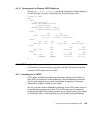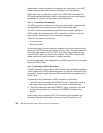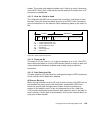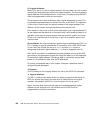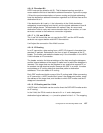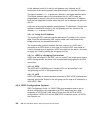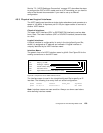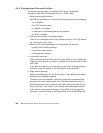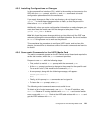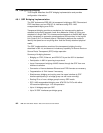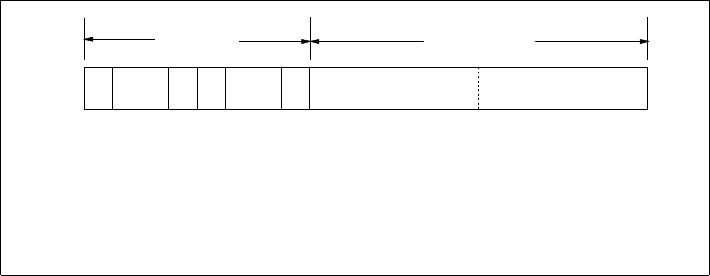
Configuration of IP-Forwarding Media Cards 135
header. The media card reads the header only if told to do so by information
in the HIPPI I-field. If the I-field tells the card to read the IP header, then an IP
connection is established.
4.5.1.3 How the I-field is Used
The I-field tells the GRF how to process the connection, and where to send
the data. Figure 49 shows the basic structure of a HIPPI I-field. Connection
control information is in the leftmost 8 bits, addressing takes up the other 24
bits.
Figure 49. HIPPI I-Field Components
4.5.1.4 Camp-on Bit
The camp-on (C) bit is set to 1 or 0, which translates to on or off. The HIPPI
source host uses camp-on to tell a HIPPI device (switch or router) to wait until
a busy destination becomes available and to keep trying to make the
connection.
4.5.1.5 Path Selection Bits
The path selection (PS) bits have four settings directing the HIPPI media card
how to read the 24-bit destination address.
00 Source Routing
When the path selection is set to 00, that is source routing, the HIPPI source
has selected the exact route to the destination, because the HIPPI host
knows the specific path through some number of devices (switches or
routers) to the endpoint host. In fact, the rightmost bits of the I-field (bits
0–23) contain the physical output slots for each switch or router in the path. In
source routing, a return path is automatically "built" by the network device at
each point of data transfer.
31 24 23 0
12 11
Addressing
Control
LVUWDPSC
Logical Address Host A
Logical Address Host B
L = Locally administered bit (L=0)
VU = Vendor unique bits (not used)
W = Double wide bit (not used)
D = Direction bit
PS = Path selection bits
C = Camp-on bit



